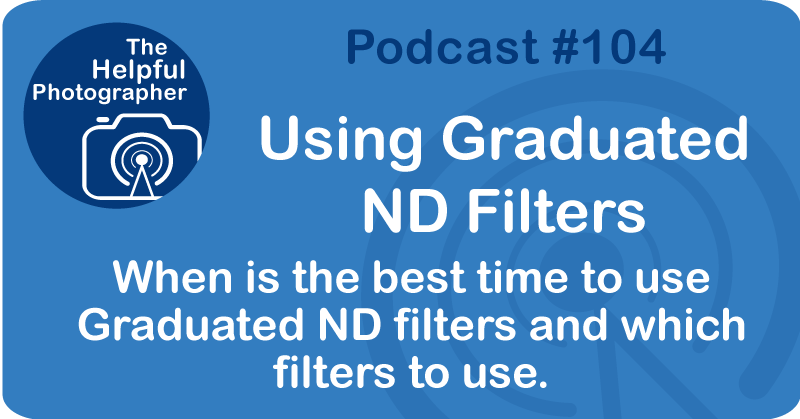Using Graduated ND Filters #104
Using Graduated ND Filters #104

I've been getting more into the world of neutral density filters, as I now have a formal relationship with NisiOptics, and as a result, I'm starting to use square ND and grad ND filters more and more. Recently, someone asked me why a grad ND is even necessary. Here's the long answer. First of all, a graduated ND filter is a filter that is darker on one end than the other. They look a lot like those sunglasses where it's darker at the top and slowly fades at the bottom. Grad NDs come in different strengths, from a couple of stops of neutral density to several stops. You'll find them designated as soft, medium, and hard Grad NDs as well. This refers to how quickly the filter transitions from light to dark. If you have a straight or mostly straight horizon line, as you would with a seascape, then you would use a hard ND. But if you have an uneven horizon, as you would the Manhattan skyline, you would want to use a soft ND because it would be less obvious that there was a filter in play. The reason that you would use a Grad ND is because most of the time the sky is very bright relative to the landscape. Another thing to note is if you look closely at the horizon, you will see that the sky becomes brighter as it gets closer to the horizon. Also, if you have lovely clouds in your shot, they tend to get blown out. As a result of this, what you'll get very often is a high dynamic range or contrast and the land in your shot. By using a Grad ND, you'll be able to reduce the exposure in those bright areas without affecting the dark area of the land, and therefore mostly eliminating the contrast issue and getting you to a more perfect shot without having to do multiple exposures. But the question begs, why not just do this in Lightroom? Can't you just do a graduated exposure there? With the current upgrades in Lightroom and the Horizon filter mask, it is most definitely getting easier to fix these problems. But, and of course you knew there was going to be a but in there, right? The problem is that sometimes those clouds are going to be completely blown out, and there will be no way to recover that texture. You only have two choices in that instance, which is to bracket your shot and HDR the shot in post-process, or use a Grad-ND filter. If, however, you are doing a long exposure and the clouds are moving, this makes doing a bracket significantly more difficult. Because the clouds are moving. Another problem is that if the sky is that blown out, you will not be able to bring the blue back either. At least not easily. So again, this is a good reason to be using a Grad-ND. Also, there's an argument to getting it all done in one shot, rather than doing it in post. but I'm not totally convinced about that last one.
I hope that was helpful. Until next time, keep on shooting.










